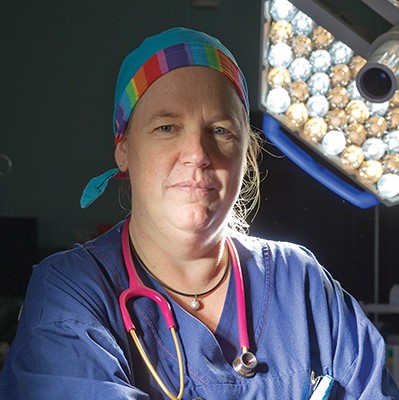Search
Research
Early life predictors of obstructive sleep apnoea in young adults: Insights from a longitudinal community cohort (Raine study)Obstructive sleep apnea (OSA) increases the risk of perioperative adverse events in children. While polysomnography (PSG) remains the reference standard for OSA diagnosis, oximetry is a valuable screening tool. The traditional practice is the manual analysis of desaturation clusters derived from a tabletop device using the McGill oximetry score. However, automated analysis of wearable oximetry data can be an alternative. This study investigated the accuracy of wrist-worn oximetry with automated analysis as a preoperative OSA screening tool.
Research
Risk assessment and optimization strategies to reduce perioperative respiratory adverse events in Pediatric Anesthesia—Part 2: Anesthesia-related risk and treatment optionsPerioperative respiratory adverse events are the most common cause of critical events in children undergoing anesthesia and surgery. While many risk factors remain unmodifiable, there are numerous anesthetic management decisions which can impact the incidence and impact of these events, especially in at-risk children.
Research
Perioperative pediatric tonsillectomy analgesia: A single-center review of practice and cost-effectiveness analysisTonsillectomy is one of the most common pediatric surgeries and results in considerable postoperative pain. Insufficiently managed pain is costly, risks physiological and psychological consequences with multi-modal analgesia widely recommended to minimize opioid-based agents. We determined adherence to multi-modal analgesia guidelines and assessed cost-effectiveness. We undertook a cross-sectional cohort study at a tertiary pediatric institution in Perth, Western Australia, retrospectively identifying selected patients undergoing tonsillectomy over two discrete periods of 6-week duration.
Research
Prenatal Exposure to General Anesthesia and Childhood Behavioral DeficitExposure to surgery and anesthesia in early childhood has been found to be associated with an increased risk of behavioral deficits. While the US Food and Drug Administration (FDA) has warned against prenatal exposure to anesthetic drugs, little clinical evidence exists to support this recommendation. This study evaluates the association between prenatal exposure to general anesthesia due to maternal procedures during pregnancy and neuropsychological and behavioral outcome scores at age 10.
Research
Patient and carer priorities for research and clinical care of children with Down syndromeDown syndrome, the most common genetic disorder, is caused by the presence of all or part of a third copy of chromosome 21. We identified the top 10 patient and carer research priorities for children with Down syndrome.
Research
COVID-19 implications for pediatric anesthesia: Lessons learnt and how to prepare for the next pandemicCOVID-19 is mainly considered an “adult pandemic,” but it also has strong implications for children and consequently for pediatric anesthesia. Despite the lethality of SARS-CoV-2 infection being directly correlated with age, children have equally experienced the negative impacts of this pandemic.
Research
Anesthetic considerations in children with asthmaDue to the high prevalence of asthma and general airway reactivity, anesthesiologists frequently encounter children with asthma or asthma-like symptoms. This review focuses on the epidemiology, the underlying pathophysiology, and perioperative management of children with airway reactivity, including controlled and uncontrolled asthma.
Research
Prior administration of chocolate improves the palatability of bitter drugs: The Choc-with-Med studyThe paediatric population has a low adherence and acceptance rate of unpalatable medicines. This study aimed to determine whether eating chocolate immediately prior to drug administration would help to mask the bitter taste of a drug. The difference in taste masking efficacy between white, milk and dark chocolate was a secondary measure outcome.
Research
Error traps in pediatric difficult airway managementDifficult airway management in children is associated with significant morbidity. This narrative review on error traps in airway management aims to highlight the common pitfalls and proposes solutions to optimize best practices for pediatric difficult airway management. We have categorized common errors of pediatric difficult airway management into three main error traps.

The Perioperative Medicine team has developed a unique chewable tablet that gives the child the sensation of having a full stomach, without compromising their fasting regime.
